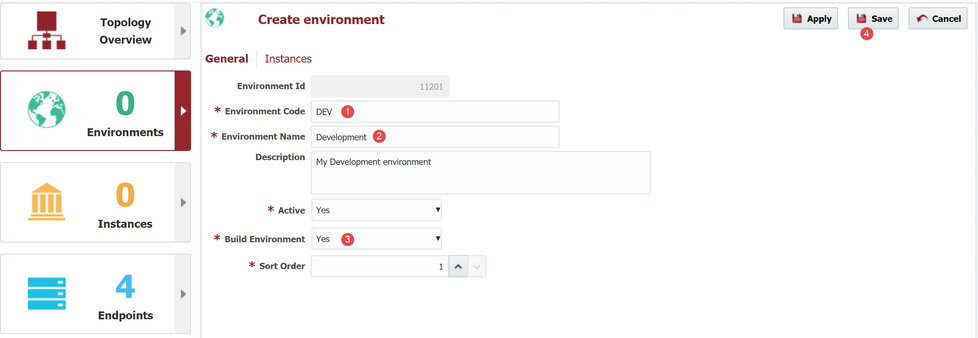At the completion of this section, you will:
- understand the use of environments in the deployment process
- be able to create/modify an environment
An Environment is a logical name given to a group of servers, applications, and technologies which work together to provide a software solution for the purpose of development, testing, or a production implementation. Typical Environments include, but are not limited to, Development (DEV), System Integration Testing (SIT), User Acceptance Testing (UAT), and Production (PROD).
For this tutorial we will create four environments - Development, Test, QA, and Production. These environments host our physical EBS installations for our logical global EBS instance.
...
Click on the + in the upper right corner to create and configure a new Environment. Enter the following required fields for the new environment, and click Save to apply your changes.
...
.
And next we will repeat the steps above for Test, QA, and Production (with Build Environment set to "No").
...
We now have one build environment and three deployment environments.
After creating these, the Environment screen should look like this.
| Completed 5 of 10 Sections | Continue to Environment Instance Configuration | Back to Instance Creation |
|---|
...


